From Broadcast to Streamcast: The New Era of Sports Viewing
The Sports Streaming Revolution: How Platforms Are Reinventing Fan Engagement
NAB Show 2025 Explores the Future of Sports Media
구독 유지 경쟁 심화, FAST 플랫폼 부상, 개인화·인터랙티브 경험이 스포츠 시청의 새 표준으로
The way sports fans consume content is undergoing a fundamental transformation. As streaming emerges as the central pillar of the media ecosystem, leagues, broadcasters, and technology platforms are redefining everything from how games are delivered to how fans engage and how revenue is generated. This isn't merely a platform shift—it represents a fundamental change in the fan experience itself. Fans are no longer passive viewers but have evolved into "participatory consumers" who demand personalized experiences informed by data.
This transformation was captured comprehensively in the session "From Broadcast to Streamcast: The New Era of Sports Viewing" at NAB Show 2025. The discussion brought together leading figures in sports streaming, advertising, and platform innovation, creating a focal point for diagnosing the future of sports media.
Moderated by Ben Honey, a reporter from Front Office Sports, the panel featured Cathy Rasenberger, CEO of Rasenberger Media; Josh Walker, Co-founder of Sports Innovation Lab; Drew Simon, Content Director at Genius Sports; and Justin Fromm, Head of Samsung Ads Insights.
As the panel discussion began, the first key theme to emerge was the intensifying competition for subscription retention. Industry leaders agreed that retaining existing fans has become more critical than acquiring new subscribers.
Year-round content offerings, dedicated community management, and personalized recommendation systems have become essential tools for deepening subscriber relationships. Based on accumulated data about individual viewing behaviors, engagement strategies that extend beyond live broadcasts and loyalty management have moved to the center of the business model.
This shift extends beyond mere technological innovation into a broader trend: the comprehensive redesign of the fan experience across the entire sports media industry. Platforms are notably focused on providing viewers with diverse choices and maximizing engagement through personalization and interactivity, actively responding to fans' evolving expectations and demands.
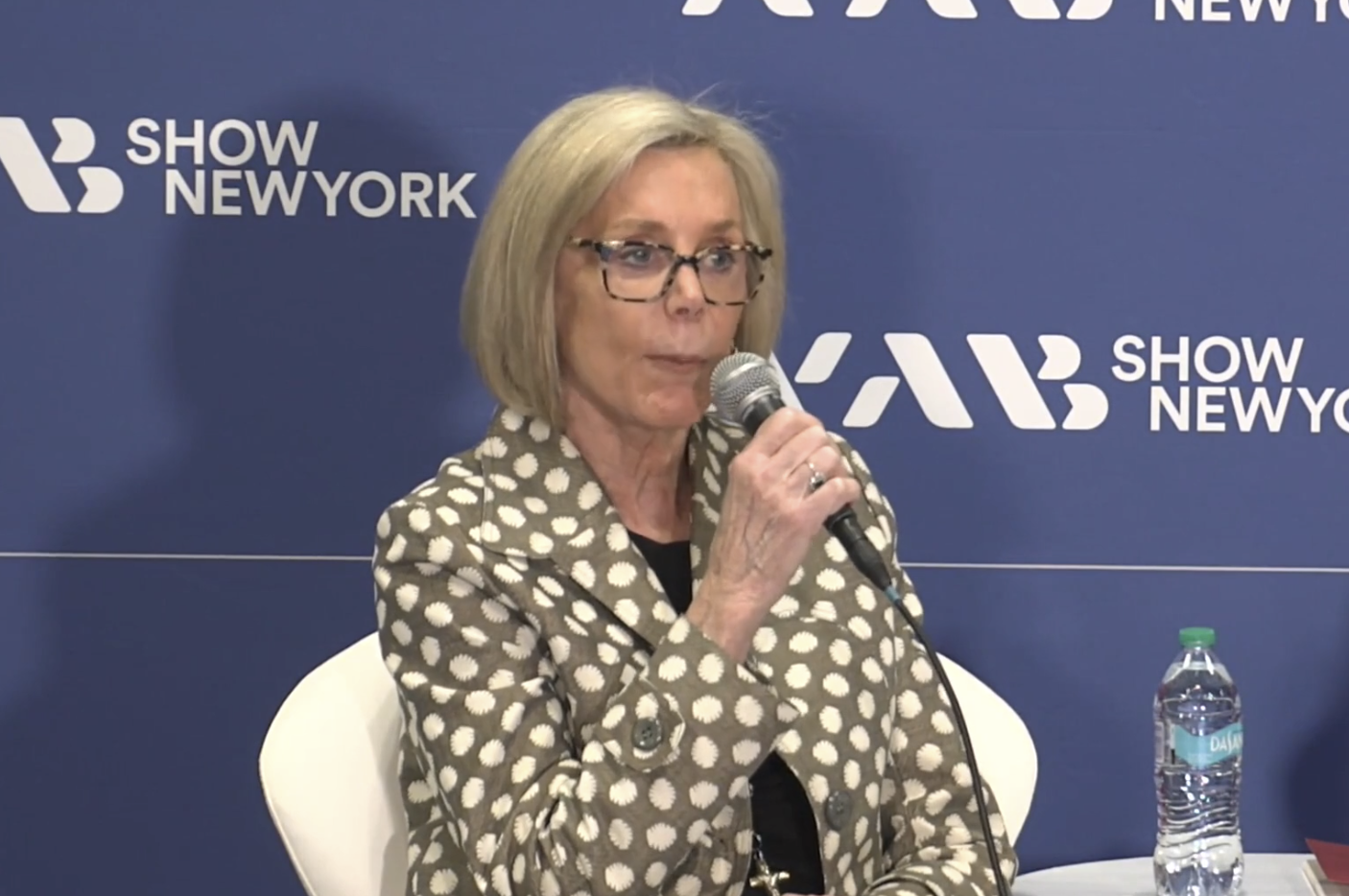
Generational Divide and Changing Viewing Habits
The session opened with an anecdote about an NBA season opener. One viewer comfortably watched the game on cable TV, while his friend, no longer subscribing to cable, struggled to access the broadcast. This scene symbolically illustrates the generational gap in sports media consumption and the changing viewing environment.
Panelist Cathy Rasenberger noted that "a significant portion of all TV users now watch Free Ad-Supported Streaming TV (FAST) weekly. This shift isn't just about streaming expansion—it's a full-scale transition to FAST platforms, particularly pronounced among younger audiences."
Josh Walker, Co-founder of Sports Innovation Lab, shared trends emerging from consumer spending data: "You only acquire a new customer once. About two years ago, we saw a surge in streaming subscriptions, but recently the market has fragmented again. Consumers realize they can't access all content through a single platform and are increasingly using multiple services simultaneously."
Ultimately, this anecdote and data analysis vividly demonstrate from the industry frontlines that we're witnessing not just a platform change but a fundamental paradigm shift in sports media consumption—one where fans' demands for "choice" and "personalization" are growing increasingly stronger.

Subscription Retention: Streaming's New Battleground
The most important finding from this session is that "retention rate" has emerged as a core business metric. Josh Walker noted that "users who sign up for streaming apps for the NFL season are twice as likely to cancel after the season ends." This statement clearly reveals the real challenge facing the sports media industry. Simply attracting new customers continuously is no longer sufficient to ensure sustained growth and revenue. Preventing fan churn and keeping them engaged with the service has become the critical battleground.
Indeed, churn rates for streaming services are particularly high for sports and specialized genres. According to second-quarter 2025 statistics from Antenna, a U.S. market analysis firm, churn rates for specialty genres, sports, and vMVPDs (virtual multichannel video programming distributors) were higher compared to premium SVOD (Subscription Video On Demand) services.
Based on monthly averages since 2023, specialty SVOD churn rates currently stand at 6.6%, having fluctuated between 6.6% and 9.2%. Sports SVOD is currently at 5.1%, with a somewhat wider range of 4.4% to 12.0%. vMVPD rates are at 4.5%, ranging between 4.1% and 7.1%.
In contrast, premium SVOD services (Netflix, Disney+, etc.) record a relatively low 4.1%, maintaining stability within the 4.1% to 5.5% range. The particularly low churn rate for premium SVOD is attributed to the solid foundation of long-term subscribers on platforms like Netflix.
Synthesizing this data reveals that subscription churn patterns and business risks fundamentally differ based on each service's targeted genres, fan base, and year-round personalized content strategies. From a U.S. market perspective, the subscription war in sports media continues to rage fiercely over "retention."
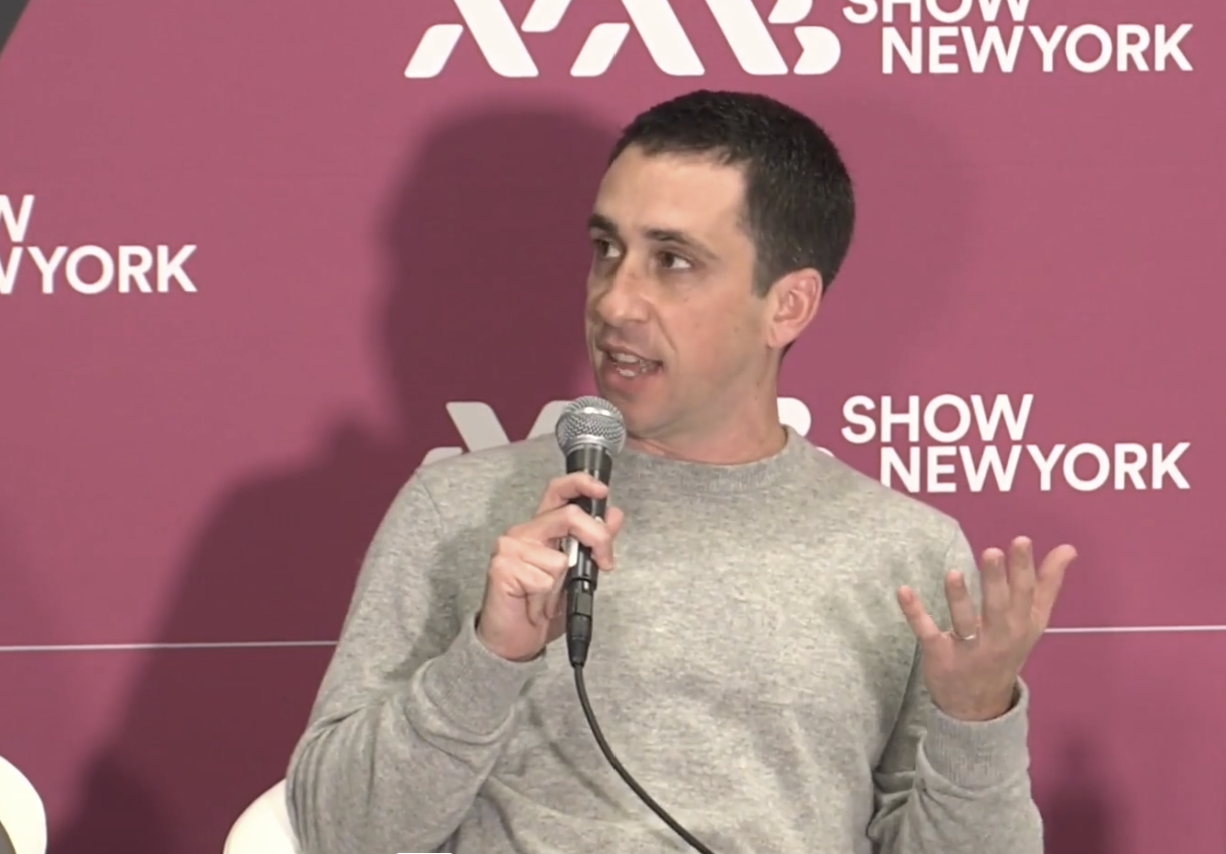
Soccer: The Ideal Sport for Streaming with 11-Month Seasons
Drew Simon, Content Director at Genius Sports with over a decade of experience at CBS Sports, discussed traditional broadcasters' long-term strategies: "One of the smartest strategies in recent years has been investing in soccer. Soccer leagues provide fans with content for 11 months of the year, making it the most effective choice for improving service retention."
He continued: "The NFL is undeniably king, and no one doubts that. But even the NFL faces the major challenge of filling the seven months after the season ends from August through the February Super Bowl. Broadcasters like NBC transition immediately to football when basketball takes a month-long break, continuously maintaining fan interest."
Meanwhile, streaming platforms like Amazon and Netflix demonstrate a different approach. They don't rely solely on live sports but immediately offer vast content across diverse genres like drama and entertainment after major matches conclude. "On Netflix, a popular show comes out in January, and another series launches in March. Ultimately, each platform pursues different strategies."
The sports media industry is thus seeking individual solutions amid subscription retention, year-round content strategies, and competition among comprehensive entertainment platforms. This suggests that "long-term fan relationships" will become the decisive variable determining business success or failure in future markets.

The Rise of Interactive Experience and Personalization
Rasenberger emphasized the importance of community and interaction, citing the example of FreeLiveSports.tv(FLS Live Sports on Apple), which she co-founded and co-owned: "We view the platform like a sports bar in Times Square. You come in to watch a cricket match you can't find elsewhere and discover other sports you love on different screens."
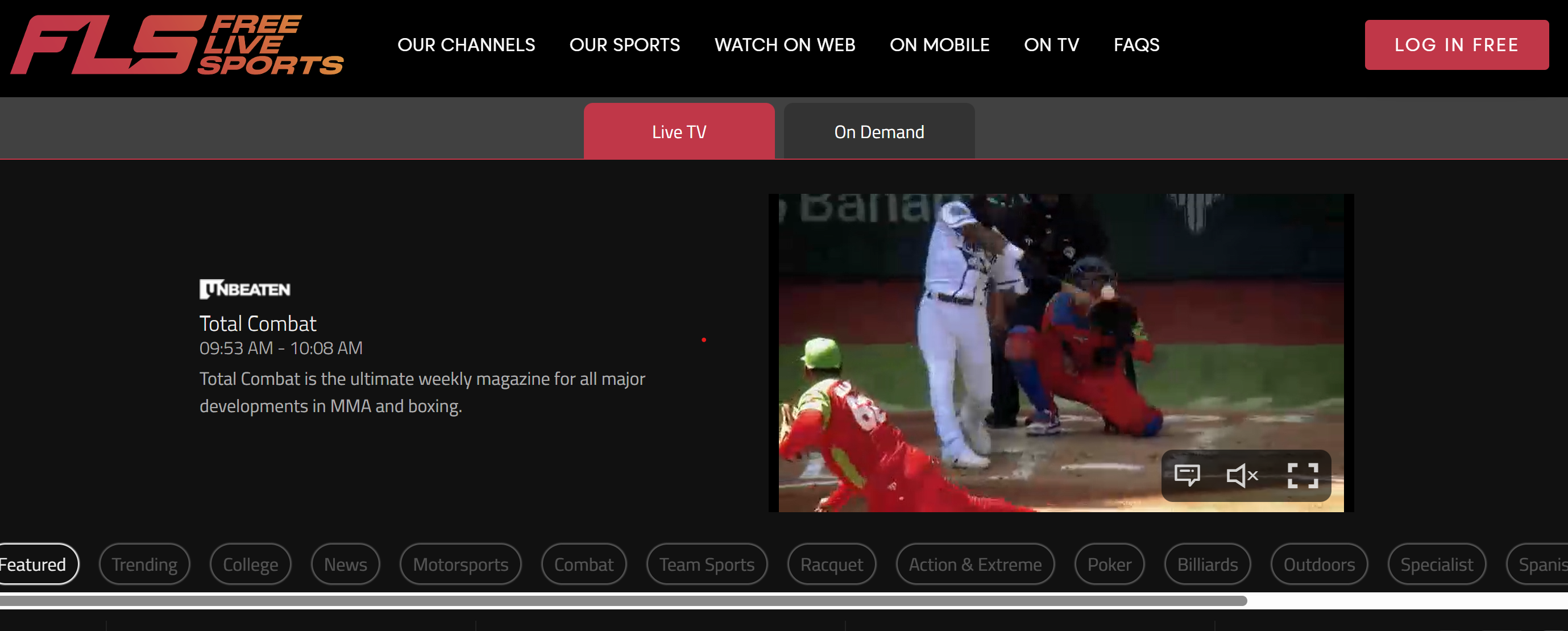
"We plan to integrate an interactive SDK through a company called GluedIn. Additionally, we’re experimenting with interactive features from another partner, Canvas Space. These solutions will let users interact with content, vote, earn rewards, and shop directly within the sports bar environment. This approach keeps audiences more engaged with the content and encourages them to stay immersed in the sports bar experience."
Amazon has recently expanded interactive features, integrating live data on screen, providing betting data, and using AI for personalization.
Linear TV Continues—Through FAST
Smart TVs are emerging as the center of personalized platforms in the home. Justin Fromm of Samsung Ads emphasized: "Linear television will continue. Only its source will change—now through FAST (Free Ad-Supported Streaming TV) services. This change is possible because personalization is happening."
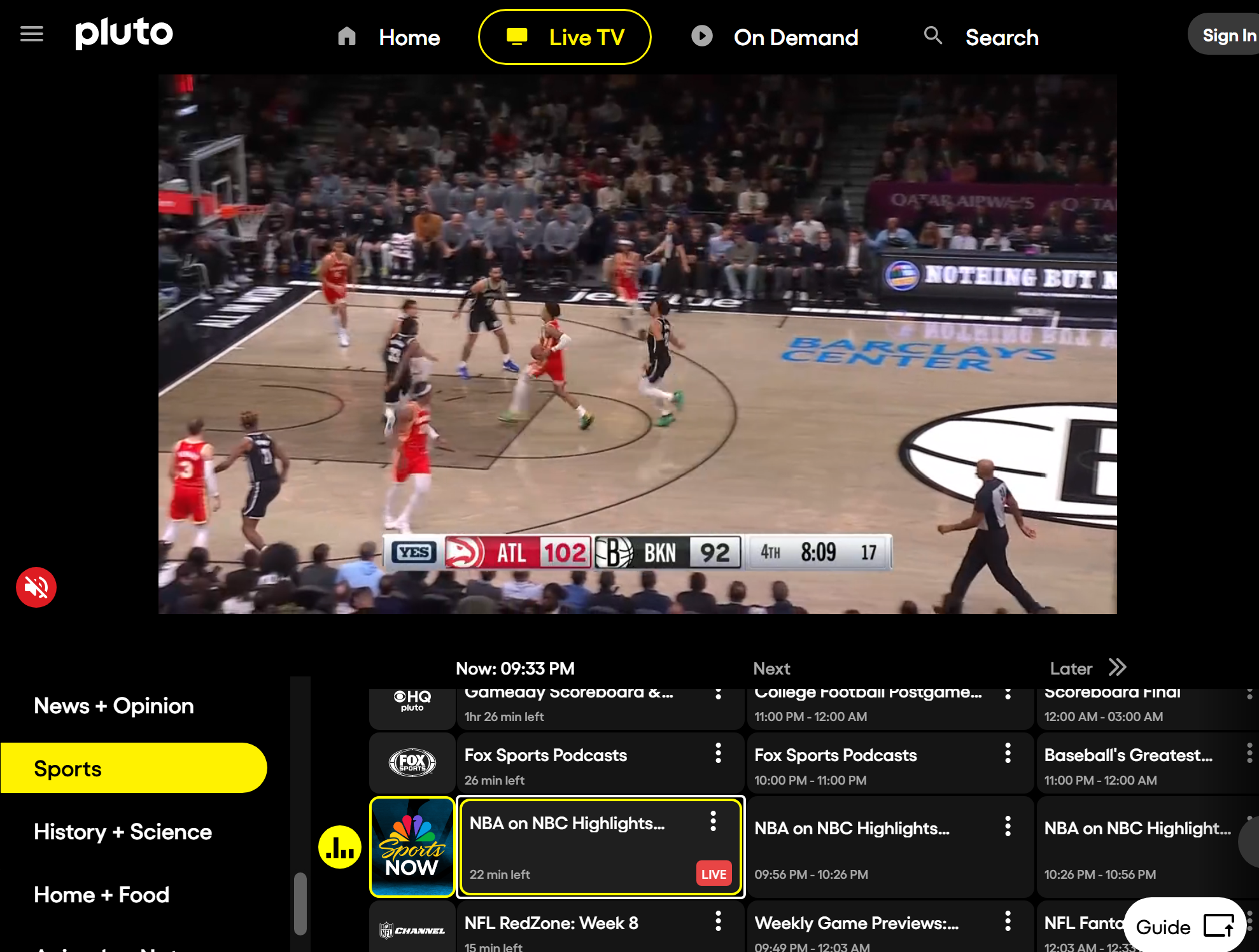
He continued: "TVs are as smart as other devices in your home. They understand user behavior and learn from it. Consumers expect TVs to do this. The TV is the biggest and best screen in the house. Why can't it be the smartest?"
This personalized experience and data-driven recommendation functionality form the background for TVs positioning themselves as central digital hubs in the home beyond simple viewing. According to recent consumer research, Walker stated: "Over 85% of consumers are doing more than just watching on their TVs. This is a change we couldn't have imagined 10 years ago. TVs now offer so many functions."
However, more sophisticated data utilization is essential for content personalization and recommendations. Traditional broadcasters have faced limitations in collecting and utilizing accurate user data. Industry attention is focused on the potential for a true personalization era if TV operating systems and platforms continuously learn and suggest optimal content. Simultaneously, various challenges remain regarding data privacy, utilization methods, and advertising customization.
Ultimately, the future of TV is evolving toward becoming "the smartest screen in the home," continuously suggesting user-specific content and customized services. However, this evolution touches on data sovereignty, recommendation system transparency, and cooperation challenges among various stakeholders, requiring industry-wide wisdom on this evolutionary path.
The Challenge of Content Personalization and Data
Simon emphasized that personalization and immersive content technologies (XR, AR, MR) have significantly advanced in streaming service sports broadcasts.
Using the 1st down line (the virtual line added graphically to screens during American football broadcasts indicating the first down point) as an example, Simon noted that just as when this technology was first introduced 30 years ago, viewers welcome information when it's added "naturally without disrupting" their experience. This suggests that providing customized information without impeding viewers' information choice and immersion is the future competitiveness of sports media.
Indeed, during the 2025 World Series, Fox Sports showcased a new dimension in baseball broadcasting using AR (Augmented Reality) and high-quality audio technology. The World Series broadcast featured drone-based AR graphics, pitch tracking from Ump Cams attached to umpire helmets, and vivid audio effects from enlarged bases as key features.
Fox Sports implemented real-time AR graphics through drone filming inside the stadium. With MLB approval, drones flew inside when players weren't on the field, inserting graphics that visually overlay various game information in real-time. AR graphics naturally provided diverse information from viewers' perspectives, including game situations, scoreboard information, and aerial stadium views.
However, challenges remain. Walker observed: "Think about Netflix—it becomes the ultimate recommendation engine. TVs learn, operating systems learn, and there's so much that can optimize what content to recommend. But the industry doesn't know what else that consumer purchases. Until that layer is built, we can't stand before the consumer." This indicates that while current "recommendation systems" are developing with great sophistication based on users' viewing history, true personalization remains limited because all data isn't yet integrated.
TV viewership measurement and data sharing are emerging as core issues for broadcasting and advertising industries. Simon pointed out: "Currently, much viewership measurement comes from a small panel of households, and true audience analysis is only possible when devices become smarter and consumers share more data." For example, during NFL game broadcasts, you often see prompts like "Share information with NBC," an industry signal that greater personal information utilization is needed to improve viewer experience.
The panel discussion also addressed the complexity of advertising personalization. Simon emphasized: "Even if advertisers hold ad inventory for, say, an automotive brand, structural limitations prevent immediately running different types of car ads just because viewers aren't interested in trucks," noting that "immediate personalization of advertising and recommendations isn't easy because leagues and media companies are bound by massive rights contracts."
For the market to truly move toward data-driven advertising, sustained efforts are required across industry-wide data sharing, device intelligence, viewer education, and long-term changes to media rights structures. The conclusion is that the path to viewer-customized content and advertising must be accompanied by structural industry changes and expanded consumer trust alongside technological evolution.
Social Media and Multi-Screen Experience
The modern sports viewing environment has moved beyond the simplicity of watching a single screen into an era of digital multi-experience. Rasenberger explained: "We produce sports clips suited to short attention spans and develop community tools where fans can directly participate."
Indeed, fans simultaneously utilize multiple devices and platforms even while watching games. Recent data analysis shows this behavior has become an important inflection point, keeping fans on specific platforms longer while expanding opportunities for social sharing and real-time participation.
Traditional major sports (e.g., NFL, NBA) have limited access to a few premium platforms, but smaller sports and new leagues are rapidly growing through digital channels. Rasenberger noted: "niche and emerging sports like table tennis surged on our platform when they weren't on cable, and viewership more than doubled on our EPG (electronic program guide) when live events occurred. Live content strongly drives viewership, and smaller sports also have great potential."
Consumer demand is also driving market change. Walker assessed: "The Women's Super League cycled through various channels and platforms because there was actual high fan demand, but traditional broadcasters overlooked it," analyzing that "recently, the WNBA has also evolved through data and marketing from hidden demand that existed in the past."
Finally, Simon summarized: "The power of sports TV in the digital age is that users can freely find the sports they want and directly participate in dramatic moments." Modern sports viewing experience is expanding beyond single screens to various platforms and genres, demonstrating an era where fan choice and participation are becoming increasingly important.
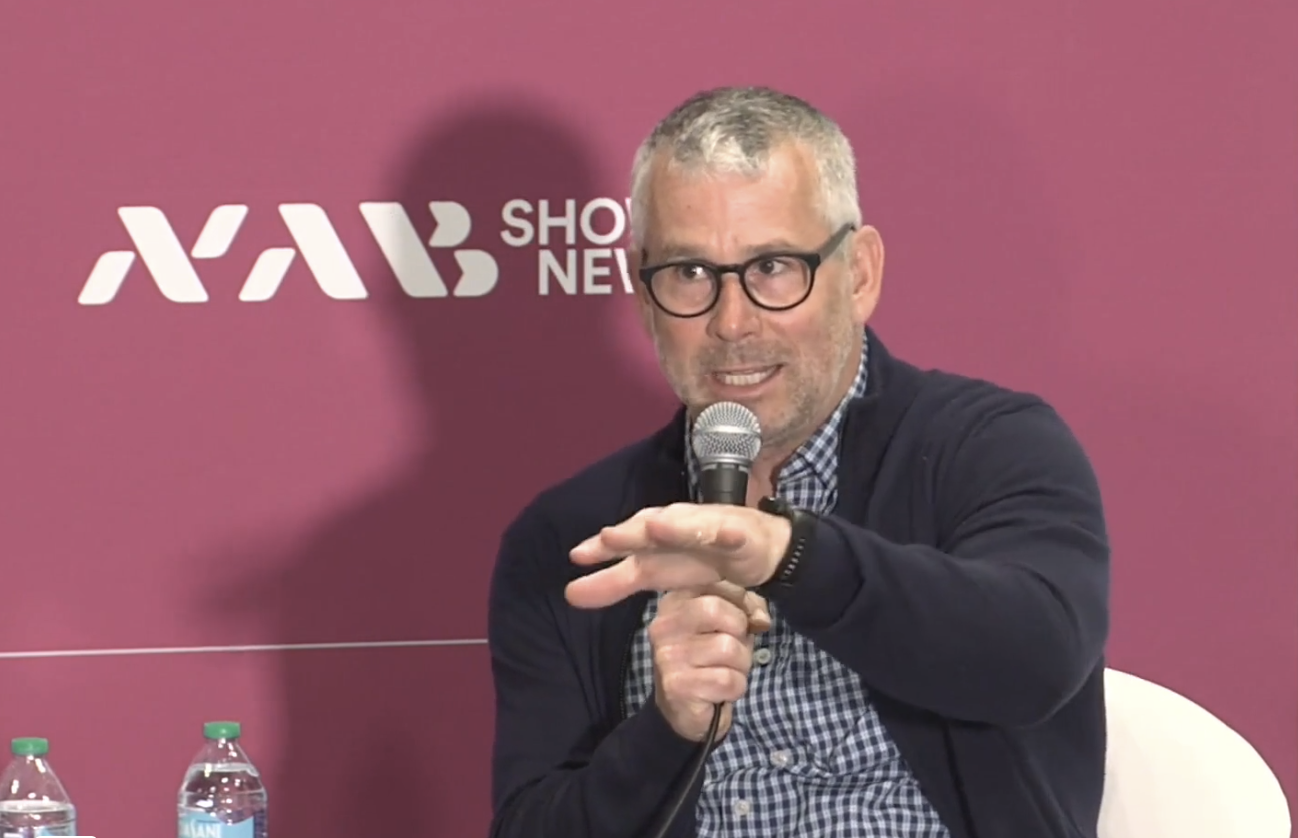
Sports Betting Integration Issues
Sports betting platform integration is emerging as a new growth driver for the industry.
According to Deloitte, among Gen Z and younger fan bases, the pattern of switching between three or more devices during games while simultaneously utilizing sports betting information and real-time community functions is particularly pronounced. Rasenberger stated: "Since 85% of Gen Z is accustomed to this multi-screen usage, we're pursuing overlay service integration to reflect this. Although we don't yet provide direct in-app betting, this functionality will be included in the future."
Genius Sports' Simon also mentioned: "We originally started as a betting data company and are now collaborating with hundreds of sports," discussing the expansion of the sports betting market and data-driven innovation. He emphasized: "For responsible gaming, we hope the industry moves closer to social gaming characteristics." This suggests expanding the paradigm beyond gambling toward socially centered play—like wagering badges or jersey wearing with friends—potentially attracting new fan bases.
Recently, real-time betting and fan engagement features are rapidly expanding the market while innovating the fan experience. However, voices are growing louder calling for industry-level efforts to establish responsible gambling culture and prevent indiscriminate betting among younger audiences.
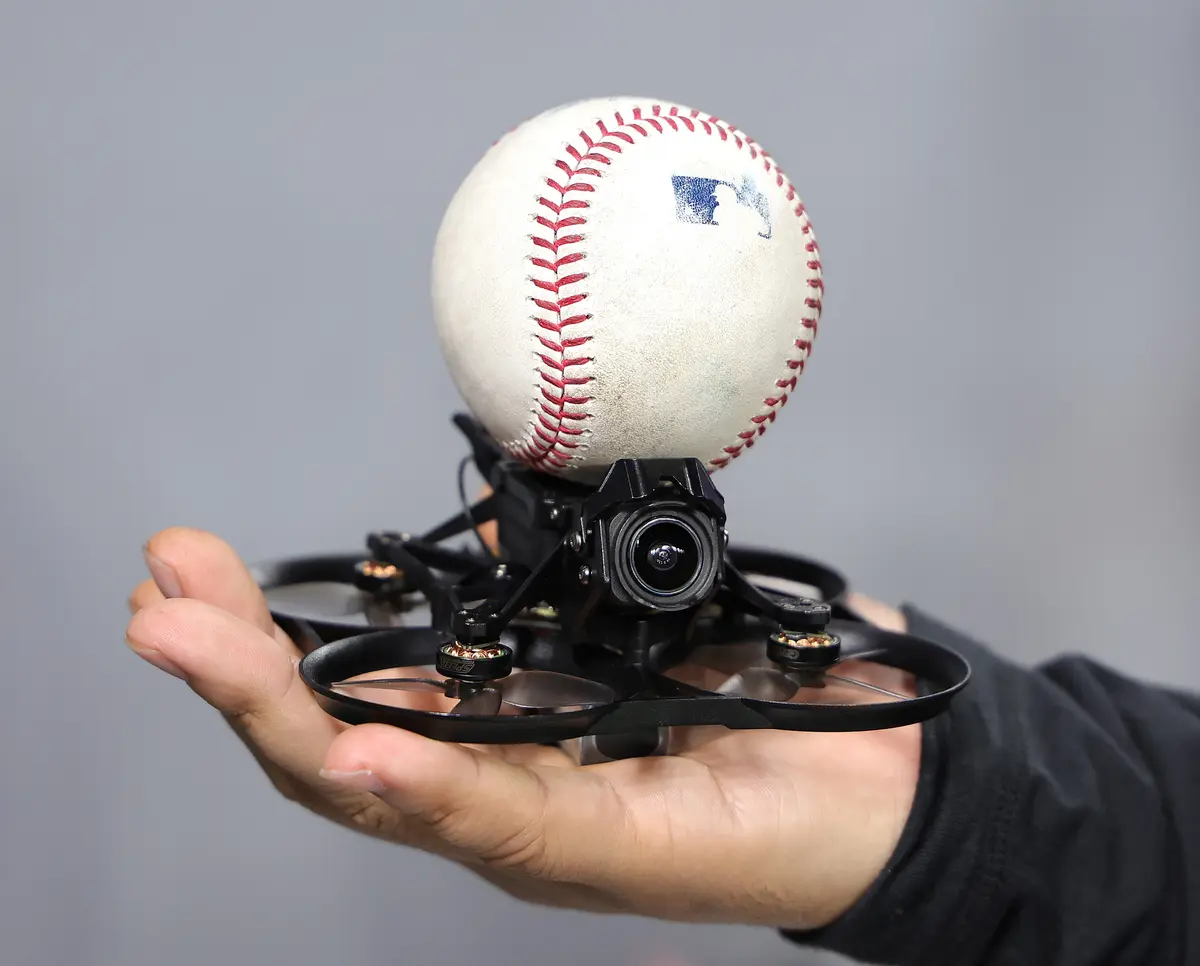
Conclusion: A Changing Paradigm
NAB Show 2025 clearly demonstrated that the sports media industry has reached a turning point. The shift from linear TV to streaming isn't simply a change in viewing channels but a paradigm shift in the entire structure of fan experience and content consumption.
Key trends include:
Subscription retention competition is intensifying. Year-round content strategies to drive continued engagement of existing subscribers rather than new signups have become essential.
Personalization and interactive experience have become viewing standards. The combination of AI and smart devices is making fan-centric customized consumption a reality—immersive sports viewing experiences.
Data utilization is the core of competitiveness, but privacy protection and measurement standardization remain challenges.
The rise of niche sports is noteworthy. Beyond the rights market centered on giant leagues, smaller sports are growing based on passionate fan communities.
Multi-platform, multi-screen consumption has become the new baseline. Fans experience sports content across multiple devices and channels, and producers must respond to this complex viewing behavior.
Ultimately, the future of sports media isn't a binary of "TV vs. streaming." The core is fan-centric. As viewing control shifts from platforms to fans, media companies must provide customized experiences based on consumer data and maintain brand trust and subscription loyalty over the long term. Sports is no longer unidirectional broadcasting but is evolving into an expanded experience industry combining participation, immersion, and community.
방송에서 스트리밍으로: 스포츠 시청의 새로운 시대
NAB Show 2025, 스포츠 미디어의 미래를 논하다
스포츠 팬들의 시청 방식이 근본적인 재편기에 들어섰다. 스트리밍이 미디어 생태계의 중심 축으로 부상하면서, 리그와 방송사, 그리고 기술 플랫폼들은 경기 중계의 방식부터 팬과의 소통, 그리고 수익화 구조 전반을 새롭게 정의하고 있다.
단순한 플랫폼 전환이 아니라 팬 경험의 본질적 변화가 진행 중이다. 팬들은 이제 단순히 시청하는 존재가 아니라, 데이터를 통해 이해되고 개인화된 경험을 요구하는 ‘참여형 소비자’로 진화하고 있다.
이러한 변화의 흐름을 집약적으로 보여준 세션이 NAB Show 2025에서 열린 "From Broadcast to Streamcast: The New Era of Sports Viewing"이다. 이 토론은 스포츠 스트리밍, 광고, 플랫폼 혁신 분야를 선도하는 인물들을 한자리에 모으며, 스포츠 미디어의 미래를 진단하는 장으로 주목받았다.
사회는 프런트 오피스 스포츠의 벤 호니 기자가 맡았고, 패널로는 래슨버거 미디어의 캐시 래슨버거 대표, 스포츠 이노베이션 랩 공동창업자 조시 워커, 지니어스 스포츠 콘텐츠 디렉터 드류 사이먼, 그리고 삼성 애즈 인사이트 책임자 저스틴 프롬이 참여했다.
패널 토론이 시작되자 가장 먼저 등장한 화두는 ‘구독 유지 경쟁의 심화’다. 업계 리더들은 신규 가입자 유치보다 기존 팬을 지속적으로 붙잡는 전략이 이제 필수적이라고 입을 모았다. 연중 이어지는 복합 콘텐츠, 전용 커뮤니티 관리, 그리고 맞춤형 추천 시스템 등은 구독자와의 관계를 심화시키는 핵심 수단으로 자리 잡았다. 팬 개개인의 시청 행태 데이터 축적을 바탕으로, 실시간 중계 이후까지 이어지는 참여 유도와 충성도 관리가 비즈니스 구조의 중심이 되고 있다.
이 같은 변화는 단순한 기술 혁신을 넘어, 스포츠 미디어 산업 전반에 걸친 ‘팬 경험의 재설계’라는 거대한 흐름으로 확장되고 있다. 플랫폼들은 무엇보다 시청자에게 다양한 선택권을 제공하고, 개인화·인터랙티브 기반의 몰입도를 극대화함으로써, 팬들의 진화하는 기대와 요구에 능동적으로 대응하려는 모습이 두드러진

세대 간 격차와 시청 습관의 변화
세션은 NBA 시즌 개막전을 둘러싼 한 에피소드로 문을 열었다. 한 시청자는 케이블 TV로 경기를 편하게 즐길 수 있었지만, 그의 친구는 더 이상 케이블 구독을 하지 않아 경기를 시청하는 데 어려움을 겪어야 했다. 이 장면은 스포츠 미디어 소비에서 나타나는 세대 간의 간극과, 변화하는 시청 환경을 상징적으로 보여준다.
패널의 캐시 래슨버거 대표는 “현재 모든 TV 사용자의 상당수가 매주 무료 광고 기반 스트리밍(FAST; Free Ad-Supported Streaming TV)을 시청하고 있다”며, “이번 변화는 단순한 스트리밍 확산이 아니라, FAST 플랫폼으로의 본격적 전환이다. 특히 젊은 층에서 그 움직임이 더욱 뚜렷하게 나타난다”고 분석했다.
스포츠 이노베이션 랩의 조시 워커 공동창업자는 소비자 지출 데이터에서 포착한 새로운 트렌드를 소개했다. “신규 고객 유치는 한 번뿐입니다. 약 2년 전만 해도 스트리밍 구독 서비스의 급증이 확인됐지만, 최근 들어 시장은 다시 파편화되고 있습니다. 소비자들은 더 이상 단일 플랫폼으로 모든 콘텐츠를 해결할 수 없다는 점을 깨닫고, 다양한 서비스를 병행해 사용하려는 경향을 보이고 있습니다.”
결국 이 일화와 데이터 분석은, 단순한 플랫폼 변화가 아니라 스포츠 미디어 소비의 근본적 패러다임 이동 — 즉, 팬의 ‘선택권’과 ‘개인화’에 대한 요구가 점점 더 강해지고 있음을 산업 현장에서 생생하게 보여준다.

구독 유지, 스트리밍 서비스의 새로운 전장
이 세션에서 가장 중요한 발견은 ‘구독 유지율’이 핵심 비즈니스 지표로 떠올랐다는 점이다. 조시 워커 공동창업자는 “NFL 시즌을 위해 스트리밍 앱에 신규 가입한 이용자들은 시즌 종료 후 서비스를 해지할 확률이 두 배나 높다”고 언급했다. 이 발언은 스포츠 미디어 업계가 직면한 진짜 도전을 선명하게 보여준다. 더는 새로운 고객을 끊임없이 유치하는 것만으로는 지속적인 성장과 수익을 담보하기 어렵다. 팬의 이탈을 막고, 서비스를 오래 사용하도록 만드는 것이 비즈니스의 핵심 전장으로 바뀌고 있다.
실제로 스트리밍 서비스별 이탈률(Churn Rate)은 특히 스포츠나나 전문 장르 일수록 높다. 미국 시장 분석기관 안테나(Antenna)가 발표한 2025년 2분기 통계에 따르면, 전문 장르(스페셜티, Specialty), 스포츠, vMVPD(가상 유료방송 플랫폼)의 이탈률이 프리미엄 SVOD(Subscription Video On Demand) 대비 높게 집계됐다.

2023년 이후 월별 평균을 기준으로 하면, 스페셜티 SVOD의 이탈률은 현재 6.6%로, 6.6~9.2% 구간에서 변동을 보여왔다. 스포츠 SVOD의 경우는 현재 5.1%로 집계되며, 이탈률 구간이 4.4~12.0%까지 다소 넓은 편이다. vMVPD는 4.5%로, 4.1~7.1% 사이에서 나타났다.
반면 프리미엄 SVOD(넷플릭스, 디즈니+, 등)는 현재 4.1%로 상대적으로 낮은 수준을 기록하며, 4.1~5.5% 내에서 안정적으로 관리되고 있다. 특히 프리미엄 SVOD의 이탈률이 낮은 것은 넷플릭스 등 장기 구독 이용자가 견고한 기반을 형성하기 때문이라는 분석이 나온다.
이러한 데이터를 종합하면, 각 서비스가 겨냥하는 장르와 팬층, 그리고 연중·맞춤형 콘텐츠 전략에 따라 구독자 이탈 패턴과 비즈니스 리스크가 근본적으로 달라진다는 점을 알 수 있다. 미국 시장 기준으로 볼 때, 스포츠 미디어 산업의 구독 전쟁은 여전히 ‘유지’에서 격렬하게 전개되고 있다.
연중 11개 월이나 경기를 하는 축구는는 스트리밍에 적합한 종목이다.
CBS 스포츠에서 10년 넘게 경험을 쌓은 드류 사이먼 지니어스 스포츠 콘텐츠 디렉터는 전통 방송사의 장기적인 전략을 소개했다. “최근 몇 년간 가장 똑똑한 전략 중 하나는 바로 축구에 투자하는 것입니다. 축구 리그는 팬들에게 연중 11개월이나 끊임없이 콘텐츠를 제공하는 종목으로, 서비스 유지율을 높이는 데 가장 효과적인 선택이었습니다.”
그는 이어 “NFL은 명실상부한 왕이고, 이 사실을 의심하는 사람은 없습니다. 하지만 NFL도 시즌이 8월부터 2월 슈퍼볼이 끝나면, 나머지 7개월을 채우는 것이 큰 과제입니다. NBC 같은 방송사는 농구가 한 달 휴식기에 들어가면 바로 풋볼로 전환해 계속 팬의 관심을 이어갑니다”라고 덧붙였다.
한편, 아마존과 넷플릭스 같은 스트리밍 플랫폼은 또 다른 방향성을 보여준다. 이들은 단지 라이브 스포츠에만 의존하지 않고, 빅 매치가 끝나면 곧바로 드라마나 예능 등 다채로운 장르의 방대한 콘텐츠를 제공한다. “넷플릭스에서는 1월에 인기 쇼가 나오고, 3월엔 또 다른 시리즈가 출시됩니다. 결국, 각각의 플랫폼이 추구하는 전략이 달라지는 셈입니다.”
이처럼 스포츠 미디어 업계는 구독자 유지와 연중 콘텐츠 전략, 그리고 종합 엔터테인먼트 플랫폼의 경쟁구도 속에서 각자의 해법을 모색하고 있다. 이는 앞으로의 시장에서 ‘팬과의 장기적 관계’가 사업 성패를 좌우할 결정적 변수가 됨을 시사한다.
인터랙티브 경험과 개인화의 부상
래슨버거는 자신이 공동 창업한 프리 런치 스포츠(Free Lunch Sports)의 사례를 들며 커뮤니티와 상호작용의 중요성을 강조했다. "우리는 플랫폼을 타임스퀘어의 스포츠 바처럼 봅니다. 다른 곳에서 찾을 수 없는 크리켓 경기를 보러 들어와서, 다른 화면에서 사랑하는 다른 스포츠를 발견합니다."
"우리는 인터랙티브 SDK를 콘텐츠 위에 레이어링하여 사람들을 스포츠 프로그래밍에 더 깊이 끌어들입니다. 그들은 콘텐츠와 상호작용할 수 있고, 투표하고, 보상을 받고, 커머스와 쇼핑을 할 수 있어서 콘텐츠에 더 깊이 관여하고 스포츠 바 안에 머물게 됩니다."
아마존이 최근 화면에 라이브 데이터를 통합하고, 베팅 데이터를 제공하며, AI를 사용해 개인화하는 등 인터랙티브 기능이 확대되고 있다.
실시간 TV는 계속된다. FAST를 통해
스마트 TV가 가정 내 개인화 플랫폼의 중심으로 부상하고 있다. 삼성 애즈의 저스틴 프롬은 “실시간 텔레비전(Linear Television)은 앞으로도 계속될 것입니다. 다만, 그 소스가 달라질 뿐입니다. 이제는 FAST(Free Ad-Supported Streaming TV) 서비스를 통해서죠. 이런 변화가 가능한 이유는 바로 개인화가 이루어지고 있기 때문입니다.”라고 강조했다. 그는 이어 “TV는 집 안의 다른 기기들처럼 스마트합니다. 사용자의 행동을 이해하고, 행동에서 배웁니다. 소비자들도 TV가 그래야 한다고 기대하고 있죠. TV는 집에서 가장 크고 최고의 화면입니다. 왜 가장 똑똑할 수 없겠습니까?”라고 말했다.
이처럼 개인화된 경험과 데이터 기반 추천 기능은 TV가 단순한 시청을 넘어 집 안의 중심 디지털 허브로 자리매김하는 배경이 되고 있다. 실제로 최근 소비자 조사 결과에 따르면, 워커는 “85% 이상의 소비자가 단순히 시청 그 이상을 TV로 하고 있다고 답했습니다. 10년 전에는 상상할 수 없었던 변화입니다. 이제 TV는 너무 많은 기능을 제공합니다.”라고 밝혔다.
그러나 콘텐츠 개인화와 추천을 위해서는 더 정교한 데이터 활용이 필수적이다. 기존 방송사의 경우, 정확한 사용자 데이터를 수집하고 활용하는 데 한계가 있었다. TV OS와 플랫폼들이 끊임없이 학습하며 최적의 콘텐츠를 제안할 수 있다면 진정한 개인화 시대가 열릴 것이라는 점에 업계의 시선이 모이고 있다. 동시에 데이터 프라이버시와 활용 방식, 광고 맞춤화 등 다양한 과제가 남아있는 것도 사실이다.
결국 TV의 미래는 ‘집에서 가장 똑똑한 스크린’이 되어 사용자별 콘텐츠와 맞춤형 서비스를 끊임없이 제안하는 방향으로 진화하고 있다. 하지만 이러한 진화는 데이터 주권, 추천 시스템의 투명성, 다양한 이해관계자의 협력 과제와도 맞닿아 있어 그 진화의 길에 업계 전체의 지혜가 필요하다는 분석이다.
콘텐츠 개인화와 데이터의 과제
사이먼은 스트리밍 서비스 스포츠 중계 방송에서 개인화와 몰입형 콘텐츠 기술(XR, AR, MR) 상당히 발전했다고 강조했다.
사이먼은 1st down 라인(미식축구 중계 중에 화면에 그래픽으로 추가되는 첫 번째 다운 지점의 가상선)을 예로 들며, 30년 전 이 기술이 처음 도입될 때처럼, 정보가 시청자의 경험을 “방해하지 않으면서 자연스럽게” 추가될 때 시청자들이 이를 환영한다는 점을 지적했다. 즉, 시청자의 정보 선택권과 몰입감을 저해하지 않으면서, 원하는 정보를 맞춤형으로 제공하는 것이 스포츠 미디어의 미래 경쟁력임을 시사한 것이다.
실제 2025년 월드시리즈에서는, Fox Sports가 AR(증강현실)과 고음질 오디오 기술을 활용하여 야구 중계의 새로운 차원을 선보였다. 월드시리즈의 중계에는 드론 기반 AR 그래픽, 심판 헬멧에 부착된 Ump Cam의 투구 추적, 그리고 더 커진 베이스에서 나오는 생생한 오디오 효과가 주요 특징으로 등장했다.
Fox Sports는 경기장 안에서 드론 촬영을 통해 실시간으로 AR 그래픽을 구현했다. 드론은 선수들이 경기장에 없을 때 MLB의 승인을 받아 내부에서 비행하며, 이 때 화면에 각종 경기 정보를 시각적으로 덧입히는 그래픽이 실시간으로 삽입된다. AR 그래픽은 경기 상황, 점수판 정보, 경기장 상공의 뷰 등 다양한 정보를 시청자의 시점에서 자연스럽게 제공했다.
그러나 도전 과제도 남아있다. 워커는 "넷플릭스를 생각해보세요. 궁극의 추천 엔진이 됩니다. TV는 학습하고, OS는 학습하고, 어떤 콘텐츠를 추천할지 최적화할 수 있는 많은 것들이 있습니다. 하지만 업계는 그 소비자가 또 무엇을 구매하는지 알지 못합니다. 그 레이어가 구축될 때까지 우리는 소비자 앞에 설 수 없습니다." 이는 현재 '추천 시스템'이 사용자의 시청 이력을 바탕으로 매우 정교하게 발전하고 있지만, 아직 모든 데이터를 통합하지 못해 진정한 개인화에는 한계가 있다는 이야기다.
TV 시청률 측정과 데이터 공유는 방송 및 광고 업계의 핵심 이슈로 부각되고 있다. 실제로 사이먼은 “현재 많은 시청률 측정이 소수의 패널 가구에서 이뤄지며, 기기들이 더욱 스마트해지고 소비자가 더 많은 데이터를 공유해야 진정한 시청자 분석이 가능하다”고 지적했다. 예를 들어 NFL 경기 중계에서 ‘NBC와 정보를 공유하세요’라는 안내를 종종 볼 수 있는데, 이는 시청자 경험을 개선하기 위해 더 많은 개인정보 활용이 필요하다는 산업적 신호다.
또 패널 토론에서는 광고 개인화의 복잡성이 다뤄졌다. 사이먼은 “광고주가 예를 들어 자동차 브랜드의 광고 인벤토리를 보유하더라도, 시청자가 트럭에 관심이 없다는 사실만으로 다른 유형의 자동차 광고를 바로 집행할 수 없는 구조적 한계가 있다”며, “리그와 미디어 기업이 거대한 권리 계약에 묶여 있기 때문에 광고와 추천의 즉시적 개인화가 쉽지 않다”는 점을 강조했다.
시장이 진정한 데이터 기반 광고의 길로 나아가려면 산업 전반의 데이터 공유, 기기 지능화, 시청자 교육, 미디어 권리 체계의 장기적 변화 등에 꾸준한 노력이 요구된다. 즉, 시청자 맞춤형 콘텐츠와 광고의 미래로 가는 길은 기술 진화와 함께 산업 구조 변화, 그리고 소비자 신뢰의 확대가 동반되어야 한다는 결론에 도달하고 있다.
소셜 미디어와 멀티스크린 경험
현대 스포츠 시청 환경은 더 이상 한 화면만 바라보는 단순함을 벗어나 디지털 다중 경험 시대로 진입하고 있다. 래슨버거 대표는 “저희는 짧은 어텐션에 맞는 스포츠 클립을 제작하고, 팬들이 직접 참여할 수 있는 커뮤니티 도구도 개발하고 있습니다”라며, 미디어 소비 방식의 변화 양상을 설명했다.
실제로 팬들은 경기 시청 중에도 여러 기기와 플랫폼을 동시에 활용하고 있다. 최근 데이터 분석 결과, 이런 행태는 팬을 특정 플랫폼에 오래 머무르게 하고, 동시에 소셜 공유와 실시간 참여의 기회를 확장하는 중요한 변곡점이 되고 있다.
전통적인 메이저 스포츠(예: NFL, NBA)는 극소수 프리미엄 플랫폼에 한정적으로 접근이 가능하지만, 중소 스포츠와 신규 리그는 디지털 채널을 통해 빠르게 성장 중이다. 래슨버거는 “프랑스 스포츠, 탁구 같은 배너 스포츠 중계가 케이블에 없을 때 저희 플랫폼에서 급증했고, 라이브 이벤트가 있을 때 EPG(전자 프로그램 가이드)에서 바로 시청률이 두 배 이상 상승합니다. 라이브 콘텐츠가 시청률을 강하게 이끌고 있으며 중소 스포츠도 그 잠재력이 큽니다”라고 덧붙였다.
소비자 수요 역시 시장 변화를 이끌고 있다. 워커는 “여자 축구(Women's Super League)가 다양한 채널과 플랫폼을 순회한 이유는 팬들의 실제 수요가 높았지만, 기존 방송사가 이를 간과했기 때문”이라 평가하며, “최근 WNBA 역시 과거부터 존재했던 숨겨진 수요가 데이터와 마케팅을 통해 진화하고 있습니다”라고 분석했다.
마지막으로 사이먼은 “디지털 시대 스포츠 TV의 힘은, 이용자가 원하는 스포츠를 자유롭게 찾고 드라마틱한 순간에 직접 참여할 수 있다는 점입니다”라고 정리했다. 현대 스포츠 시청 경험은 단일화면을 넘어 다양한 플랫폼, 다양한 장르로 확장되고 있으며, 팬의 선택과 참여가 점점 중요해지는 시대임을 보여준다.
스포츠 베팅 통합 이슈
스포츠 베팅의 플랫폼 통합이 산업의 새로운 성장동력으로 부상하고 있다.
특히 딜로이트에 따르면 Z세대(Gen Z)와 젊은 팬층 사이에서는 경기 중에도 세 기기 이상을 오가며, 스포츠 베팅 정보와 실시간 커뮤니티 기능을 동시에 활용하는 모습이 두드러진다. 래슨버거 대표는 “Z세대의 85%가 이런 멀티스크린 사용에 익숙하기 때문에, 저희는 이를 반영한 오버레이 서비스 통합을 추진 중입니다. 비록 아직 직접적인 앱 내 베팅은 제공하지 않지만, 향후에는 이 기능도 포함될 것입니다”라고 전했다.
지니어스 스포츠의 사이먼 역시 “우리는 원래 베팅 데이터 회사로 출발해 수백 개의 스포츠와 협력 중”이라며 스포츠 베팅 시장의 확장과 데이터 기반 혁신에 대해 언급했다. 그는 “책임 있는 게이밍을 위해 업계가 소셜 게이밍 성격에 더 가까워지기를 바란다”고 강조했다. 즉, 사행성을 넘어, 친구들과 배지나 유니폼 착용 내기 등 사회적 플레이 중심으로 패러다임을 확장해 새로운 팬층을 유치할 수 있다는 전망이다.
최근 실시간 베팅 및 팬 참여형 기능은 팬 경험을 혁신하며 시장을 빠르게 확장하고 있다. 다만, 책임 있는 도박문화 정착과 젊은 층의 무분별한 베팅을 예방하기 위한 산업 차원의 노력이 병행될 필요가 있다는 목소리도 커지고 있다
결론: 변화하는 패러다임
NAB Show 2025는 스포츠 미디어 산업이 전환점을 맞이했음을 명확히 보여주었다. 실시간 TV에서 스트리밍으로 옮겨가는 흐름은 단순한 시청 채널의 변화가 아니라, 팬 경험과 콘텐츠 소비 구조 전반의 패러다임 이동이다.
핵심 트렌드는 다음과 같다.
- 구독 유지 경쟁이 본격화되고 있다. 신규 가입보다 기존 구독자의 지속적 참여를 유도하기 위한 연중 콘텐츠 전략이 필수적이다.
- 개인화와 인터랙티브 경험이 시청 표준으로 자리 잡았다. AI와 스마트 디바이스의 결합이 팬 중심의 맞춤형 소비를 현실로 만들고 있다. 바로 몰입형 스포츠 시청 경험이다.
- 데이터 활용이 경쟁력의 핵심이지만, 개인정보 보호와 측정 표준화 문제는 여전히 과제다.
- 니치 스포츠(Niche Sports)의 부상도 주목된다. 거대 리그 중심의 권리 시장을 넘어, 중소 종목들이 열정적인 팬 커뮤니티를 기반으로 성장하고 있다.
- 멀티플랫폼·멀티스크린 소비가 새로운 기본이 되었다. 팬들은 여러 기기와 채널을 넘나들며 스포츠 콘텐츠를 경험하고, 제작사들은 이 복합적 시청 행태에 대응해야 한다.
결국 스포츠 미디어의 미래는 ‘TV 대 스트리밍’의 이분법이 아니다. 핵심은 팬 중심이다. 시청의 주도권이 플랫폼에서 팬으로 이동하면서, 미디어 기업들은 소비자 데이터 기반의 맞춤형 경험을 제공하고, 브랜드 신뢰와 구독 충성도를 장기적으로 유지해야 한다. 스포츠는 더 이상 단방향 중계가 아닌, 참여와 몰입, 그리고 커뮤니티가 결합된 확장형 경험 산업으로 진화하고 있다.



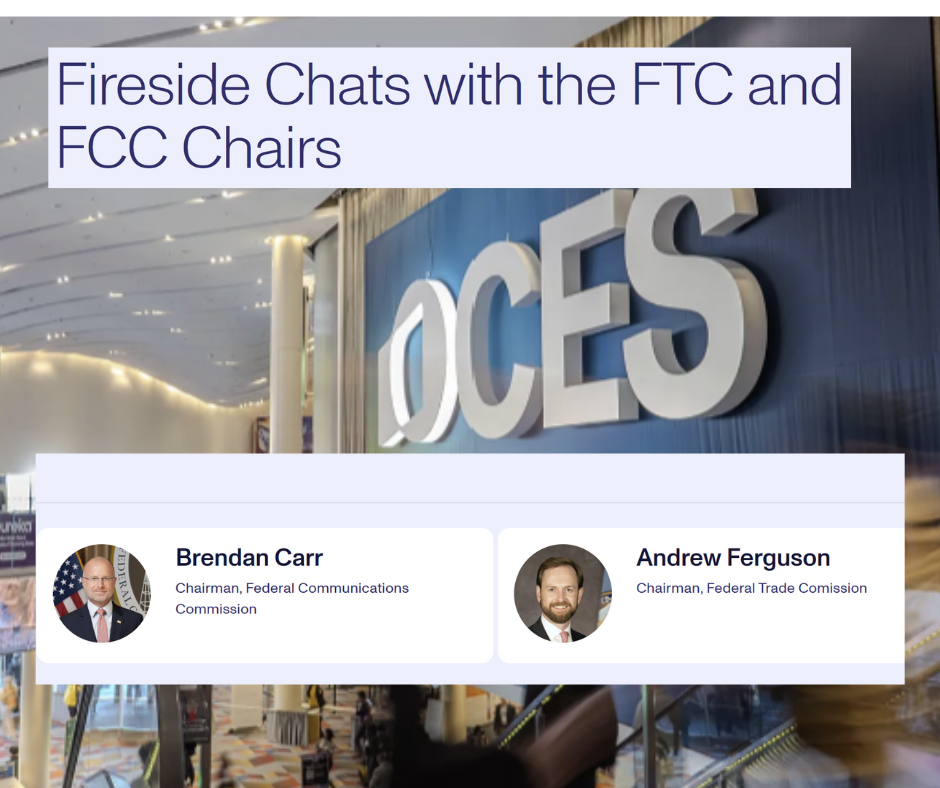

![[In-Depth]Netflix-WBD $83 Billion Mega Deal: Hollywood's Earthquake and K-Content's New Frontier](https://cdn.media.bluedot.so/bluedot.kentertechhub/2025/12/tw8qa0_202512070107.png)
![[보고서]디즈니의 IP 플라이휠, 1957년 메모에서 시작된 100년 전략](https://cdn.media.bluedot.so/bluedot.kentertechhub/2025/12/vtekpo_202512140501.png)
![[리포트]글로벌 스트리밍 대전환과 FAST 시장의 부상](https://cdn.media.bluedot.so/bluedot.kentertechhub/2025/12/7jw8up_202512120304.png)
![[보고서]K-콘텐츠, 몰입형 공간 새로운 경험](https://cdn.media.bluedot.so/bluedot.kentertechhub/2025/12/je15hi_202512061434.png)
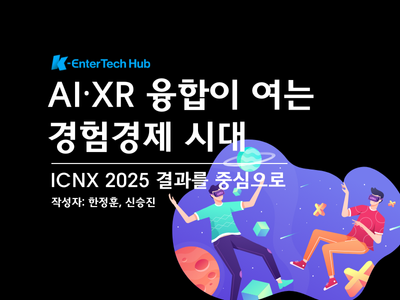


![[K콘텐츠와 K FAST]](https://cdn.media.bluedot.so/bluedot.kentertechhub/2025/11/zxwbgb_202511241038.jpg)
![[모집]1월 9일~14일 글로벌 AI 스템 캠프(자료집)](https://cdn.media.bluedot.so/bluedot.kentertechhub/2025/11/3kf0x5_202511031830.png)
![[MIPCOM2025]글로벌 엔터테인먼트 트렌드](https://cdn.media.bluedot.so/bluedot.kentertechhub/2025/10/duxlsp_202510170000.png)
![[보고서]생성AI와 애니메이션](https://cdn.media.bluedot.so/bluedot.kentertechhub/2025/09/c49fxu_202509271057.png)